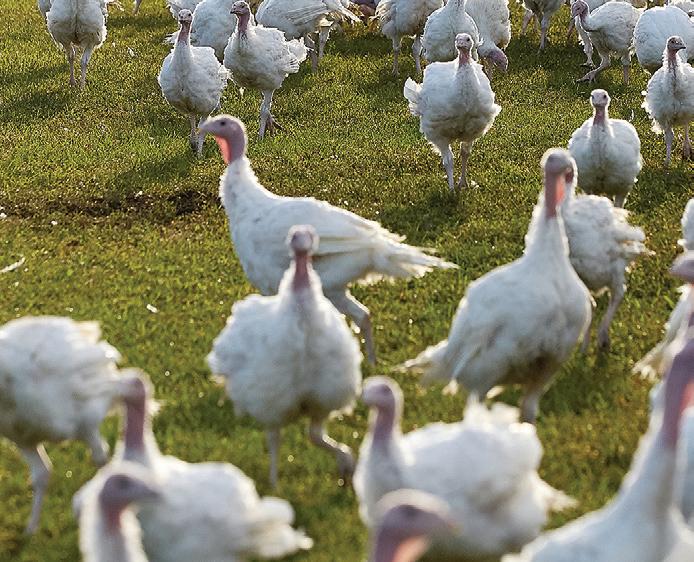











































































































































































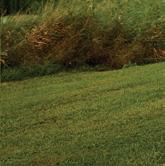




























Fall festivities were in full swing last week, as the community turned out for several local autumn happenings. LEFT- MiEnergy Cooperative hosted an event for its members on Friday, Oct. 18 at Pinter’s Gardens and Pumpkins west of Decorah. Adults and children alike milled about the Pinter’s property, enjoying games, wagon rides, miniature gold and other activities. Visitors also had the opportunity to purchase a variety














Donor family’s wishes were clear in deed for Barbara Barnhart Van Peenen Memorial Park








a night of shopping, drinks and other special events like a photo booth and trivia contest.


“As your State Senator, I’ve
-Senator Mike Klimesh VOTE
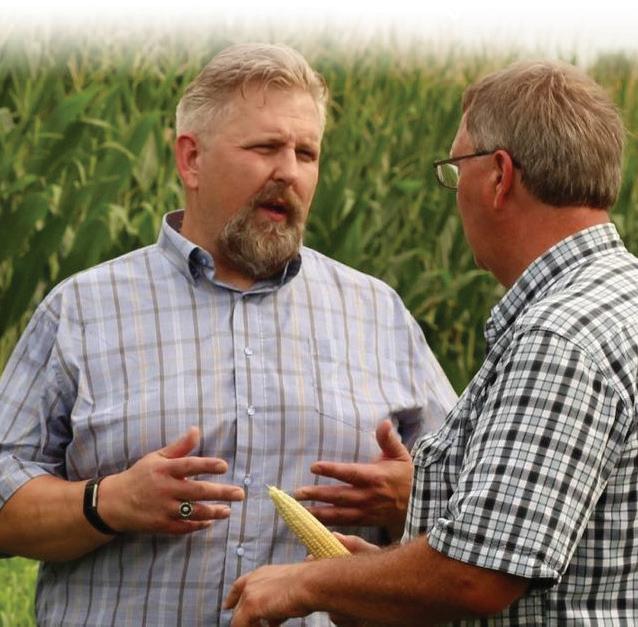





Hundreds turned out for the Northeast Iowa Quilters’ Guild show Oct. 19 and 20 at the Winneshiek County Fairgrounds Community Building. The guild was founded more than 40 years ago and boasts a membership of around 70 quilters from Iowa, Wisconsin and Minnesota. Among those 70 quilters is Mike Ellingsen of Decoarh, a Minnesota native who joined the NEIQG five years ago after he and his wife Sue moved to Decorah from Minnesota to be closer to their son. The kaleidoscopic pattern called Joseph’s Coat was designed by Ellingsen. A fabric company recently contacted Ellingsen and asked him to create this quilt to help promote the company’s solid color fabrics.




Celebrate
in community raised funds. GPC will also match up to $2,500, with the Lynch Family Foundation promising to do the same in pork donations.


We welcome donations in the form of cash and checks at all Decorah branches. For ease, checks can be made payable to one of three area food pantries: Northeast Iowa Community Action Corp, Decorah Community Food Pantry or Greater Area Food Pantry.










































Halloween is enjoyed by people of all ages, but few get a bigger kick out of the holiday than children. There are costumes to be worn, time spent with friends and the opportunity to collect free candy and other treats.
Although Halloween can be a fun time, the Children’s Safety Network warns that it’s also a time when accidents can happen. According to the CSN, the most dangerous day for child pedestrians is Halloween, with two times as many child pedestrians dying on Halloween compared to other days. It is essential to prioritize safety on Halloween, and following these guidelines can help.
• Make sure costumes are short. Costumes that drag on the floor are tripping hazards, which can lead to injury. Be sure that costumes do not cover the feet or drag on the ground.
• Trick-or-treat in groups. Children are safer in numbers due to the increased visibility of a crowd and because, if some-
thing happens, others can call for help. Parents can use their discretion on what age they feel is mature enough to let children go out alone. Until then, children should be accompanied by adults.
• Improve visibility. It’s important to be seen while trickor-treating, and that can be achieved by making sure costumes and trick-or-treat bags feature reflective tape. Trickor-treaters also can carry flashlights or glow sticks to improve visibility, and stick to areas with streetlights if going out after dark.
• Stay on sidewalks. Whenever possible, trick-or-treaters should stick to the sidewalks and avoid walking on the roads. This may not always be possible in neighborhoods without sidewalks, where parents and youngsters must be especially careful.
• Eat before trick-or-treating.
A meal or snack before trick-ortreating can reduce the tendency to fill up on candy while out






and about. All candy and other treats should be inspected by an adult before it is eaten.
• Keep pets locked away. Animals can become skittish when there are many people loitering outside of homes or ringing doorbells. Keep pets in a quiet room away from the action to prevent them from getting loose, injured or scared enough to bite or scratch someone.
• Avoid masks that obstruct vision. It can be hard to see pe-


ripherally with a mask on, so avoid costumes with masks that compromise vision.
• Test out makeup beforehand. All makeup used for costumes should be tested for allergic reactions prior to use. Heed the warnings on packaging and avoid putting makeup too close to the eyes or lips.
These are some safety strategies designed to keep Halloween fun and incident-free this year.





















































Robey Memorial Library in Waukon and The Oneota
Literary Foundation have partnered to host a Main Street Story Walk in Waukon. The walk will feature the
“How
Wallace. During
families
While

























4.




















































Every weekday morning, shoppers line up at the front door of Decorah’s Depot Outlet, Inc. for a chance at finding inexpensive clothing, collectibles and other treasures. The store, casually referred to as The Depot, opens at 9 a.m., and employees are typically restocking shelves within the first 90 minutes.
“We always have lines of people waiting to come in every morning,” said Depot Director Jessica O’Mara. “Rain or shine or 30 below, it doesn’t matter. We’re putting new stuff out every day, all day long. It comes out as fast as we can process it. In one week in December, we processed and sold 20,000 individual items, and most of those were at $2 or less.”
The store sales allow the local nonprofit thrift store to provide grants and charitable donations, totaling between $250,000 and $300,000 every year — and The Depot’s board of directors recently decided it was time for


The Depot’s board of directors recently decided it was time for the store itself to expand. The Depot bought nearly the entire 510 Montgomery St. building, where it’s currently located – the purchase almost doubled the store’s current retail and warehouse space, and the nonprofit hopes to welcome customers to it’s new space before the end of the year. (Photo by Seth Boyes)
the store itself to expand. The Depot bought nearly the entire 510 Montgomery St. building, where it’s currently located –the purchase almost doubled the store’s current retail and warehouse space, and the nonprofit hopes to welcome customers to it’s new space before the end of the year.
“It’ll be a bigger warehouse, bigger store — bigger everything,” O’Mara said. “The Depot has always very much wanted to do what we can to improve the lives of people with disabilities. So, one of the priorities in this new store is that we will finally have aisles that are ADA-approved, and shoppers will feel more comfortable because there’s enough room to shop and not feel crowded.”
History
The Depot’s current location is its fifth spot since opening 51 years ago. In 1973, The Depot was founded as a nonprofit by Rev. Ward Stephenson, Rev. Paul Christianson and Mrs. Fred Grant with a simple goal that holds true today — Donate all profits back to Winneshiek County.
The very first store location was a house on East Water Street, but it soon moved to the town’s old train depot on Water Street — the current office location of chiropractor Dr. Kelly Reagan — from which the business garnered its name. The train depot quickly became too small for the growing nonprofit, and the store moved again to the former Iverson’s Funeral Home. The store moved again due to overcrowding in 1984 to the Brickner building on Decorah’s Railroad Street. In 2013, The Depot Outlet bought 510 Montgomery St. — a portion of the building formerly owned and occupied by Lang’s Dairy Equipment.
Community dedication
The first 25 years, The Depot Outlet was operated strictly by volunteers but, as the store’s inventory grew, it needed more workers as well as paid employees. Today, O’Mara said The Depot has about 25 employees and 35 volunteers as well as “wonderful surrounding communities.”
“Donations are coming from
as far away as Minneapolis,” she said.
Today, The Depot hears and grants up to six funding requests every month, according to O’Mara. Additionally, through The Depot Outlet Lower Rate program, the organization pays $2 per taxi ride for disabled individuals in Winneshiek County — the program sees about 25 fares every day. The Depot’s member delegates approved a motion at their annual meeting earlier this year to grant $50 for every firstthrough-fourth-grade student in Winneshiek County to pay for field trips during the 2024-25 academic year.
“It’s really gratifying, because when you look at all the good we’re doing, it all matters,” O’Mara said. “Everything we do serves the entire county in every way. So many other places take donations and send their profits elsewhere. We’re different in that all the money stays right here in Winneshiek County, and we can actually see the results of all our work and take care of those closest to us first, and that is so important.”































This information is submitted by the Winneshiek County Saddle Club to bring community awareness to the important facts surrounding the donation of Barnhart Van Peenen Memorial Park in Decorah, Iowa.
Documents are printed in their entirety to ensure complete transparency.



Land Deed from donors H. J. Van Peenen and Barbara Barnhart Van Peenen to the City of Decorah clearly spells out the family’s wishes for the 120-acre park:

Dec 15, 1976. “ e Grantee by its acceptance of the premises hereby agrees to the following covenants to run with the premises:



1. at the Grantee shall not permit roads or other development such as camp sites catering to trailers or camper trucks constructed on the premises. at hunting, motorcycles, and other motor vehicles, including snowmobiles, shall be prohibited from said premises, and the premises shall be left in a state of nature as a wildlife preserve with facilities only for walking, horseback riding, backpacking, including simple camping (not requiring a developed site).


en Parks and Rec Director, Robert Hunt, said the Park Commission will be responsible for enforcing Van Peenen’s stipulations.


Parks and Rec Rules and Regulations regarding land donations
According to Decorah Parks & Recreation Rules and Regulations section VII, paragraph one, “ e Decorah Parks and Recreation Department and Board recognize that Decorah’s unique parks system has been built greatly on the generosity of donors. Every e ort is made to memorialize those generous gifts that have made these resources possible.”



At the time of this publication, no legal or official documents can be located which reflect bikers were ever given permission by Decorah Parks and Rec Commission or any other governing body to ride Van Peenen or create trails within it.
There are five positions on the Decorah Parks and Rec board. Two of which are currently held by members of the Decorah Human Powered Trails bike club.













“Dear Rick, anks for your note. You did indeed nd the
person. When Barbara and I imposed the restrictions on our gift, we were most concerned about motorized vehicles on the land’s farm roads and trails, but we were also much concerned for the wildlife habitat. Parts of the land in question are already interlaced with so many trails (people are always making new ones and taking short cuts), and such steep ones, that many are barely negotiable on foot.




I know that bikers like to ride loops and fear they would end up creating all sorts of new trails which will make the problem worse. As you know, there has been a heavy loss of the original trees already and the attempt to recreate prairie has been only partially successful.
Barbara and I wanted to keep the land as close to “nature” as was possible. If even hiking and cross country skiing have already laced the habitat with far more trails than it originally had, mountain biking can only make it worse.


Of course I appreciate the pleasure gained from mountain biking and have nothing against the practitioners of the sport. If they can be kept from damaging a small and fragile environment I would have no objection, but I really don’t think there is a way the Park Commission can control overuse.




I don’t think bicycles and hikers can coexist on the park’s narrow trails. Every time I have walked it myself I’ve found evidence that motorcycles are playing with the hills near the road even though they are expressly prohibited. Racing bikes cause less damage, or course, but the cumulative e ect is great. ere is a major deer lay-up on the property and while deer tolerate intrusion remarkably well I have some concern for them. Deer may not deserve such consideration. ey are so numerous as to be a nuisance and it may be necessary to encourage hunting in season to control them, but hunting season coincides with the best time for hiking so I object to hunting for that reason as well as for its e ect on habitat when inexperienced gunners are careless. e rare wildlife su ers the most from human intrusion. at’s especially true

























Winneshiek County Rural Waste Coordinator TJ Schissel shows a rural-collection-site placard to the board of supervisors Monday morning. (Decorah Leader photo by Zach Jensen)




SATURDAY, NOV. 210 a.m. Household, guns, shop, Vehicle auction. Raymond Dougherty Estate. Monroe Auction Service, 563-380-1676




SUNDAY, NOV. 3 - 10 a.m. Large Coin Auction, Community Center, Protivin, Ia. Shindelar Auction Service LLC 563-569-8235 www.auctionsgo.com


Crossroads Academy Alternative Day School in Decorah, IA
Special Education Paraprofessional
A division of Clinicare Corporation, Crossroads Academy is a K-12 alternative day school providing specialized instruction that combines academic and behavioral needs. We are seeking a Paraprofessional to support student behavior, emotional and academic growth.
Paid time off, health, dental, vision, life, short- and long-term disability insurances, BestFlex, 401K participation (with company match) after one-year as
sweeneyauctionservice. com
SATURDAY, NOV. 30 - Guns & Sporting Good Auction. Sale held at Sweeney Auction Center Waukon, Ia. Sweeney Auction Service Waukon. 563-568-2464. www. sweeneyauctionservice. com


TUESDAY, NOV. 19Sweeney Machinery Consignment Auction. Sale held at Sweeney Auction Center Waukon, Ia. Sweeney Auction Service Waukon. 563-568-2464. www.












Email your letter of interest and resume to JILLIAN CHRISTEN AT JChristen@clinicarecorp.com -code-

Winneshiek


















Furnished Rooms. Wi-Fi, microwave, parking, tv, restaurants. Cresco Motel. 563-547-2240. Reasonable rates; daily, weekly. 40-8-D-pd-9



For Rent: 4-bedroom,




include health insurance, IPERS, and mileage compensation. Applications will be accepted through 4:00 p.m. Nov. 5, 2024 and are available at Winneshiek County Public Health 305 Montgomery St, Suite 3 Decorah, IA 52101 or online at www.winneshiekhealth.org










































Volunteers
Ridge



Church — 1111 Montgomery Street — as the only drop-off location in Decorah. Since 1993, Operation Christmas Child has been collecting and delivering giftfilled shoeboxes to children, including many who are suffering from war,

and disaster. Operation Christmas Child hopes to reach another 12 million children in 2024 with the hope of Jesus.





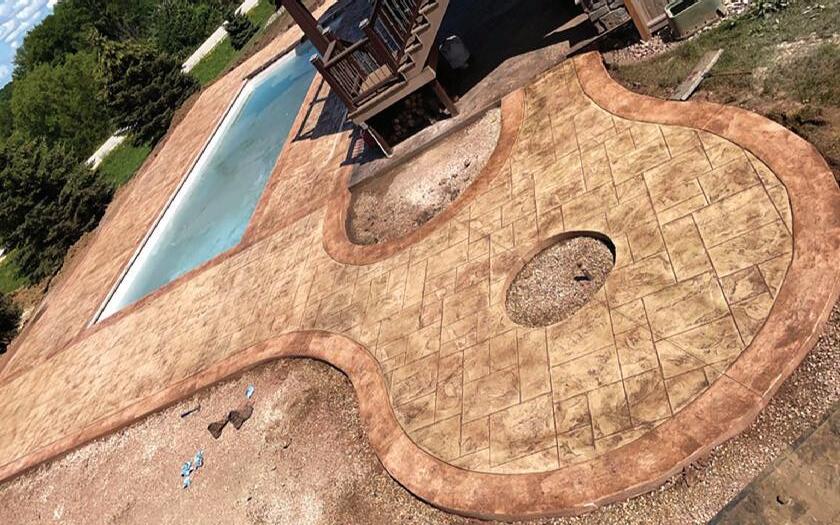
Precision, Fred Carlson 100th Ann Toys, Special Editions , Tonka & More, AMF Pedal Tractor, Green Bay Packer Mirrors & Collectibles, 12 Place Set of Reed & Barton Sterling Silverware, Knock Down Wardrobe, Marble Top Dresser & Parlor Table, China Cabinets, Dining Table w/ 6 Chairs, Secretaries, Settees, Birds Eye Maple Dresser & Bed, Hoosier Style Cupboard, Dressers, Chest of Drawers, Mid Century Chairs, Vintage Slot Machine, Wurlitzer Piano, Large Jamison Walk in Cooler Doors, 56 Gal Standard Oil Barrel, Advertising Signs, Large White Swan Sign, Napa Sign, Buoy, Seagram’s Hanging Light, Old Milwaukee Wildlife Series Mirrors, Beer Pool Lights & Others, Coca Cola Button Sign, Blow Molds: Christmas, Halloween & Thanksgiving, Vintage Christmas Décor, Griswold, Pyrex, Primitives of All Types, Record Albums, Indian Baskets, Galvanized Tubs, Yard Art, Metal Lawn Chairs, Stereos, Saddle, Guitars & Other Instruments, Brindisi Accordion, Longaberger Baskets, Milk Bottles, Craftsman Radial Arm Saw, New Tools: Bostitch Air Compressor w/ Nailers, HD Bench Grinder, 5 Sp Drill Press, 4” Belt Sander, 13” Planer, 10” Band Saw; Craftsman Tool Box, Weed Eater 24 Volt Push Mower, Wheel Barrels, Bernina Sewing Machine, 3 Kitchen Aid Stand Mixers, Ninja Blender, 12 Place Set of Lennox China. This is Large Auction with many items not listed.





























































founder Pastor Mark Rader. Cowboy Church is nondenominational and another way of spreading God’s message through music. The service includes a mix of country,




Christian country, cowboy and southern gospel and bluegrass music. Musicians are always welcome and should contact Cindy Seabright at seabright. cindy@gmail.com or 507-2721682 one week prior to the first Sunday-of-the-month service. All are welcome to attend the special anniversary service and fellowship.
The Cherry Grove United Methodist Church is located at 18183 160th Street, in the small community of Cherry Grove, rural Spring Valley, Minnesota. The church is handicap accessible.
The Heartwood Trio will be making a stop in Decorah during their Midwest tour to offer two special events. They will perform a participatory concert at 6:30 p.m. Nov. 8 at First Lutheran Church, and they will perform their original musical “The Well Tree” at 6 p.m. Nov. 9. Visit centerforbelonging.earth to learn more and to purchase tickets.
Public invited to Quilts of Valor presentations











Decorah Quilts of Valor No. 541 will be awarding Quilts of Valor to 16 area veterans on Veterans Day, Nov. 11. There will be two presentations. The first will take place at 10:15 a.m. at South Winneshiek High School gym. The awardees at that presentation will include Virgil Henry, Lee Hendrickson, Richard Hendrickson, Justin Johnson, Mark Massman, Amanda (Mikesh) Powell, Tiffany (Mikesh) Weaver, Logan Weaver and David Werges. The second will be at 3 p.m. at the Decorah All Vets Club in Decorah — 104 State St. Family, friends and the public are invited to attend. Awardees at that presentation will include Doug Abbott, Devin Creek, Gabriel Fuerhelm, Delbert Matt, Donald Nelson, Rodney Rovang and Marvin Schnur.





access right from public road. Sold “AS IS” condition, with no warranties.




Bids will be opened privately by seller and broker. The top three bidders will be notified and must be reachable by phone on November 18, 2024. The top three bidders will be required to meet Tuesday, November 19, at 9:00AM at the RE/MAX office in Harmony for a bid off. Each bidder will be able to raise their bids until the highest and best offer is reached. The successful
















































Those who want to make the most of Halloween can include travel plans in their schedules. North America boasts plenty of locations that have scary-sounding monikers, are supposedly haunted, or have attractions that will appeal to those looking for a few extra chills and thrills.
Salem, Massachusetts
Salem is a prime spot to spend Halloween because of the events that took place there in 1692-93 surrounding the Salem Witch Trials. Mass hysteria among the area’s Puritans resulted in accusations, convictions and executions of people purported to be witches. Given witches’ relationship to Halloween, Salem is popular


WinnMed is growing in many ways to meet the needs of the broader region. The most visible changes are in our Decorah facilities with the Transforming Tomorrow project. This involves a major facility expansion and remodel to provide a fully renovated birthing unit with six labor, delivery, recovery, and postpartum suites, an expanded surgery area with an additional operating room, and a two-story addition to house expanded primary and specialty clinics.
To learn more about the Transforming Tomorrow project, and to see a virtual walk-through video, head online. WinnMed.org
among tourists year-round, and especially so in October.
Screams Halloween Theme Park
Visitors to Dallas, Texas may be expecting to see cows, horses or even oil rigs, but they also can visit a theme park devoted to Halloween fright. Screams Halloween Theme Park visitors can see five haunted attractions and additional entertainment.
Tombstone, Arizona
This is the quintessential Wild West town made famous by Wyatt Earp and Doc Holliday. Resident ghosts are said to haunt the theater, and there are haunted hotels where visitors can stay. Some walking ghost tours can make a visit even more frightful.
Green-wood Cemetery, Brooklyn, NY
Many historic cemeteries offer tours around Halloween and at other times of the year.
Green-wood in the borough of Brooklyn is one of them. Walk the winding paths on your own, or sign up for a private tour.
While you’re in the area, take the Verrazano Narrows Bridge into Staten Island to visit the spooky-sounding Great Kills area. “Kill” comes from the old Dutch term meaning “creek.”
Staten Island also has Arthur Kill and Kill Van Kull, which sound equally ominous.
Sleepy Hollow, New York
“The Legend of Sleepy Hollow” is a classic story by Washington Irving featuring the fabled Headless Horseman. The


real Sleepy Hollow is a small town along the Hudson River.
During Halloween season, visitors can tour Gothic mansions and enjoy haunted hayrides, blazing pumpkins and more. Make sure you cross the Headless Horseman Bridge with plenty of time to spare to make it out of town before sunset.
Savannah, Georgia
Tourists in Savannah will find the city is billed as “America’s most haunted city.” There are a wide range of architecture styles and plenty of spots that would be right at home in horror flicks. Tours let visitors explore the city’s haunted happenings. Halloween is a time to enjoy the cool weather by traveling to locations with scary names and scenery.








Please join us for Monday November 11, 2024 In the Community Building at the Winneshiek Co. Fair Grounds 900 East Main Street, Decorah 4:00 P.M.- 6:30 P.M.
In honor of Veteran’s Day, all area Veterans, Active Military, National Guard, or Reserves and their families are invited to a in the Community Building at the Winneshiek Co. Fair Grounds. Veterans will also receive a Lynch BBQ meat and seasoning gift package. There will be twenty (20) - $1,000.00 drawings at 6:15 P.M. To participate, you must be a Veteran, Active Military, National Guard, or in the Reserves. The twenty winners will each get to decide which non-profit, military-based group that the funds will be directed to. We will also be drawing for a flag to be flown over the U.S. Capital in honor of the winning Veteran ’s name. The flag drawing will be held immediately following the $20,000.00 giveaway. Sign up will be held during the event, one entry per person. Winners will not need to be present at the time of the drawing, but must attend to sign up their name.
















































































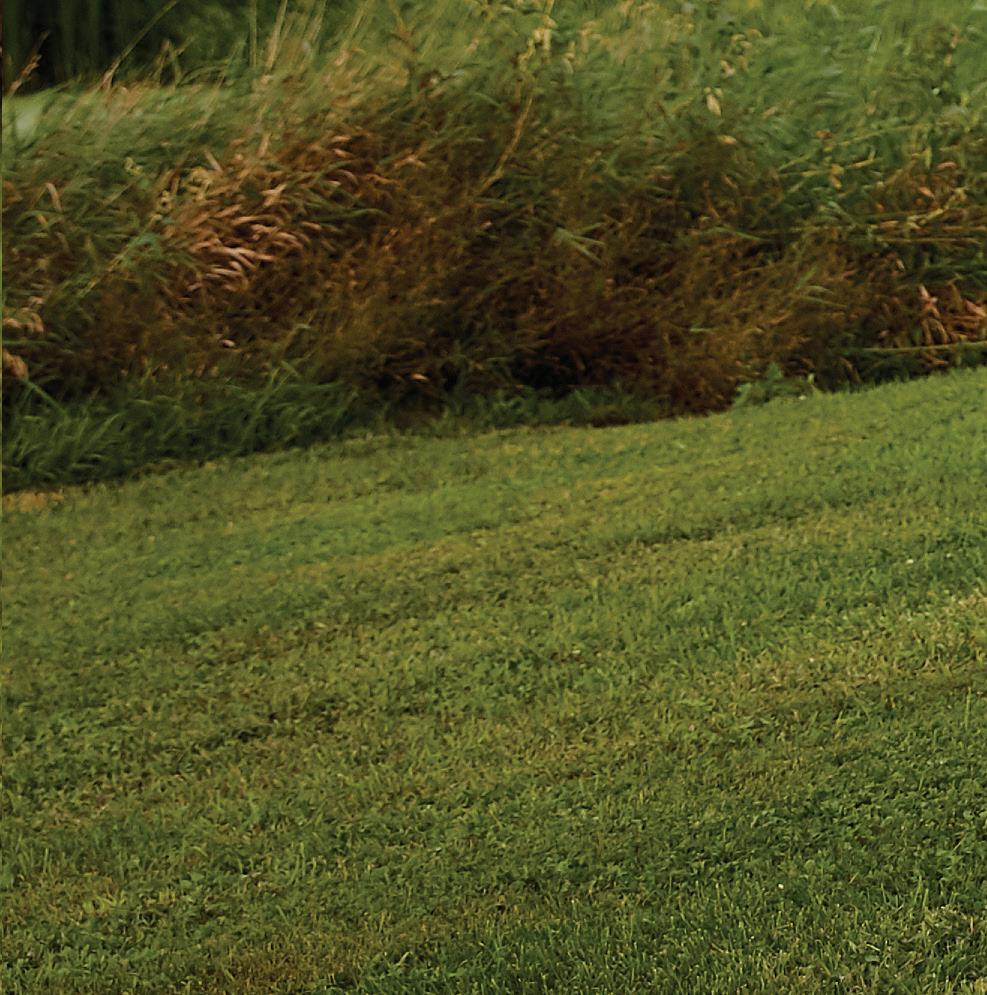















Dahlen family takes hands-on approach to new home build
Jewell Enterprizes makes strides in conservation and organic farming






COMING UP NEXT WEEK A new chapter begins for Horn Hollow estate



Published Thursday, October 29, 2024

























build, aside from the electrical and plumbing installation. And he said he was able to supply most of the materials as well.
“Almost all of our trim, I cut the trees down,” he said.
He went on to say he owns a sawmill and had been stockpiling the wood for a


“We kind of know what we want at this point,” Aaron said.

Kerbie said she, like many homebuilders in the internet age, cruised websites and social media apps looking for inspiration. And she indicated, even if her family doesn’t necessarily live in their new house for the rest of their lives, she feels a majority of its features can easily suit another family.

the work site from their previous home and sometimes take part in the process — in some cases cleaning and sometimes, in the case of their then 3-year-old son, getting up close and personal with some heavy equipment.
“He got to ride in the excavator and help dig the basement,” Aaron said. “He was pretty jacked about that.” Aaron said he and his family completed most of the work during the



number of years before he decided to have a good portion of it made into cabinets, trim and shiplap for the new home.
And while Aaron’s fingerprints were literally on many of the house’s materials, he said most of the actual design choices were left to his wife.
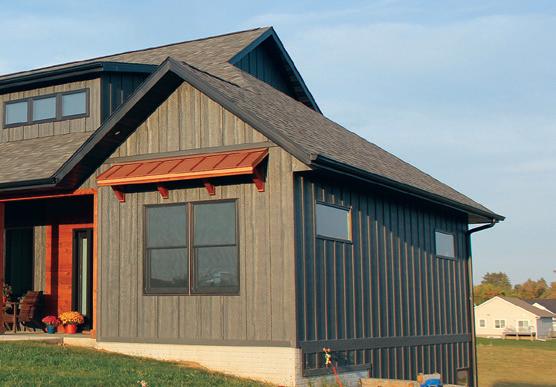



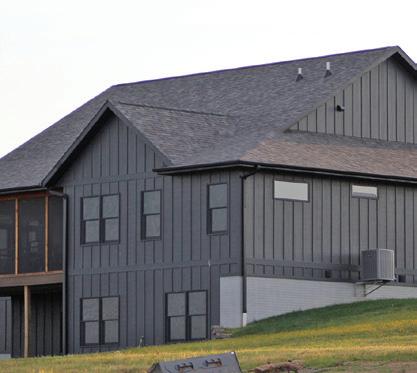











“People can replace these handles, but the cabinets are still really good quality,” Kerbie said. “It lasts a long time. We like to build with good materials, and Aaron takes pride in the contractors that he uses. They do a good job the first time.”
She went on to say Ridgeway Lumber helped with the home design as well, creating a layout based on the Dahlens’ plans. Kerbie said her goal for the home was to strike a balance between trendy designs and those which will stand the test of time.
“It’s fun to see what other people have done and kind of go off of theirs,” Kerbie said. “And then it’s
Dahlen home continued on the next page
























Aaron and Kerbie Dahlen have both been pleased with their new home’s screened in porch. The two said they spend plenty of time on the porch, which offers a scenic view of the neighborhood.
by Seth Boyes)
continued from the previous page
nice because then, when Aaron has someone that’s building, we can also bring them here and show them some of the choices we’ve made.”
One of those choices was a large mud room entry with easy access to a shower — a must in the home’s design, Kerbie said, given her her husband’s work and their active children.
She said the home’s final design grew from that initial feature, as more spaces for the family of six to live and play were added.
“We wanted a workout space and space for the kids in the basement,” Kerbie said. “They like to play pingpong and shuffle board.”
The house also includes a large screened-in porch on its east side, providing what the Dahlens called a beautiful view of the sloping hillside on which the budding neighborhood is built — both Aaron and Kerbie said they seemingly live on the porch.
The family moved into their new home over Memorial Day
The pandemic changed much about the way people live, including a propensity for spending more time at home.

In 2020, people spent far less waking time, roughly an hour and a half less on average, with people outside of their own households.
Though restrictions that limited social interactions have long since been lifted, spending at home has remained popular. More than two-thirds of Americans are spending more time at home, according to the American Time Use Survey from the U.S. Department of Labor. Inflation and the looming threat of a possible recession are undoubtedly keeping more people at home. With all that extra time on their hands, respondents have been poring their energy into fixing up their homes. Lawns, kitchens and living rooms are popular spaces to renovate.
As people continue to fix up their homes, they may be interested in ways to make them more comfortable. Certain furnishings can ensure living spaces are comfortable places to pass the time.
Ensure an abundance of light
One stark overhead light will not create a cozy environment. Introduce groupings of illu-


mination where you hope residents and guests will congregate to engage in conversation. Utilize different lighting sources, such as task lighting, table and floor lamps, recessed or ambient lighting, and even candles. Warm temperature light bulbs will add to that comfortable feeling.



weekend, after a build period of about six months. Kerbie said she has yet to find a feature she
regrets.
“We would use this layout again,” Kerbie said.

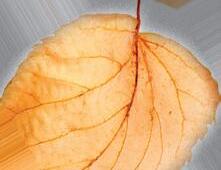


ing in your bed. It’s worthwhile to invest in pieces that are durable and, above all else, comfortable. While these items may be more expensive up front, the comfort they provide will be well worth it.
Soften harsh lines
Coordinate designs for each season
Crisp cotton and breezy linens are great for the warm weather, but when the colder temperatures arrive, it’s time to swap for flannel or jersey. Folded quilts or throws on the sofa also can be handy for chilly evenings. Make subtle changes to the home as the temperature changes to epitomize comfort in your spaces.
Splurge on your sofa and bed
Much time will be spent lounging on the couch or sleep-
Tricks like incorporating round area rugs or using oval or round pillows can break up the straight line of rooms and even modern furniture pieces. Opt for soft and inviting textiles as well. Textural elements, such as woven decor baskets, also can soften harsh lines.
Introduce organic elements
Home entertaining expert Julie Blanner says plants, flowers, fruits, and vegetables bring life to a space. Choose easy care plants if you do not have a green thumb, or swap out freshly cut






blooms in vases as pops of color and fresh elements are needed.
Utilize warm paint colors
Cool-toned paints can make a space seem colder and more utilitarian or clinical. When looking at swatches, select paints that have warm undertones. Eggshell and satin sheens will be more inviting and evoke a cozy feel more effectively than flat or matte finishes.
These are just a few ways to build a cozy and comfortable home. Working within these parameters, homeowners can customize their interior spaces to maximize comfort.



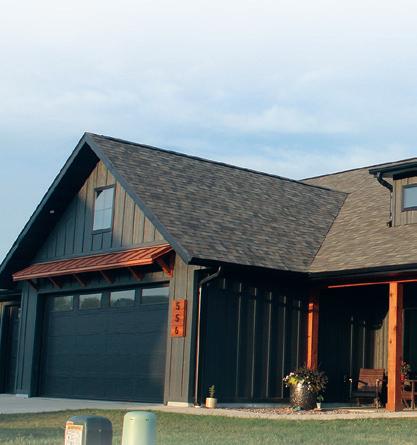


















BY ZACH JENSEN DECORAH LEADER STAFF WRITER
Organic crops, livestock and conservation practices aren’t new in the ag business, but one local family-owned farm is encouraging farmers to not only change how they farm but to also evolve how they think about the food they produce.
Bob Jewell and his son Rob, owners of Jewell Enterprizes just west of Decorah on Pole Line Road, were recently contenders for the prestigious Iowa Leopold Conservation Award, and while their efforts didn’t
garner them the award this year, the farm operation is causing others to take notice.
“Bob and Rob Jewell prioritize conservation at their 1,600-acre Jewell Enterprizes,” said information from the Sand Foundation, which hosts the annual conservation award. “Beef cattle are rotationally grazed using a mob grazing system that encourages regrowth of native grasses. To build cropland’s organic matter, the herd is grazed on cover crops. The Jewells also raise organic turkeys and pastured pork. Intermixed with fields of corn, soybeans, alfalfa and cereal grains, the Jewells

manage 95 acres of wetlands and 611 acres of timber. Protecting these highly erodible areas protects water quality while providing large, interconnected corridors of wildlife habitat.”
Rob said he believes consumers need to think more about the food they eat.
“I just think the public needs to be introduced to healthier food options,” he said. “Cheap food is an illusion. The real costs are passed down to your health and the environment. Statistically, Americans in the 1950s and ‘60s were spending more of their hard earned dollars on food than health care.
Today it’s the exact opposite, Americans spend more money on health care than any other country, and yet we are one of the sickest. What does that tell
you about our food system?
There is plenty of evidence based research out there that says eating healthy, nutrient dense whole foods will benefit your overall health in the long run. I believe in using food as medicine. Let’s be proactive and fix our chronic diseases at the root cause with healthy food, rather than eating highly processed cheap food and then relying on pharmaceutical drugs to treat the symptoms. If you’re putting garbage into your body every day, what do you think that’s going to do to your health?”
Rob says he raises organic food because he believes in epigenetics — the study of how environmental factors and behaviors can affect how genes work, without changing the

DNA sequence.
“The health that you are in when you have your children affects their health in their future,” Rob said. “The healthier I can be now, the healthier my future offspring will be. That makes sense to me.”
Rob said he tries to raise as much of his family’s food as possible — especially food his children enjoy eating.
“My kids love fruit, so I’ve planted a bunch of fruit trees and berry bushes for them to consume as they grow up,” said Rob. “Doing it this way allows us to know exactly how their food was raised. It just seems like the right thing to do. I want to create a better environment and better overall health for my kids.”
‘Eat Right or Die Young’
“I’m not 100 percent sure I would have grabbed onto the organic niche if she hadn’t pushed me, but she’s always been very health conscious,” Bob said.
“We were farmers already, and then she pushed for this, I got into it, and it got kind of crazy. But, just because we’re doing it this way, that doesn’t mean we’re doing it right and someone else is doing it wrong. It’s just what works for us.” Bob expanded the farm’s organic experiment from four acres in 1996 to 300 acres in 1998, after several neighbors were looking for someone to put their Conservation Reserve Program land back into production.








The Jewell family farm was originally established in 1876 and has always been a cow/ calf and crop operation — until 1958, when Clarence Jewell added turkeys to the mix. The Jewells’ farming methods were conventional and unquestioned until a fateful day in 1996, when Bob’s wife Paula saw a book on the kitchen counter.
“My mom was reading a book called ‘Eat Right or Die Young,’” Bob said. “It was sitting on her kitchen counter, and my wife saw it and read it, and that’s when our whole world began to change. She almost demanded that I try some organic crops.”
The operation added four acres of certified organic corn that year, which they sold for a profit. They added four acres of organic beans the next year, which yielded similar results.











“We planted all Vinton 81 organic beans,” said Bob, “and we sold them to Scoular Grain out of Omaha, and they averaged 37 bushels per acre, which is pretty darn good. There was just more profit potential on the organic side at that time.”
Bob said most of the organic bean crop was “fairly weedfree” that first year, but more weeds sprouted up each of the following years.
“Every consecutive year that we got into organic farming, we saw more weed pressure opening up, and we had plenty of weed pressure as the years went on,” the elder Jewell said.
“Sometimes, the weeds were so bad people wondered if there was even a crop in that field.”
Bob decided to eliminate beans from their organic rotation all together, because of the experience. Their current orJewell Enterprizes continued on the next page




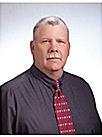


















ganic crop rotation consists of corn, small grains and alfalfa.
“This is working pretty well for us,” said Bob. “The corn market is in the gutter right now, conventional and organic, but we feed it to our turkeys and Rob’s hogs. As the old adage goes, ‘You’re far better to walk your crop off the field than to haul it.’ Put it through your livestock to enhance the premium, and there’s truth to that.”
Rob said he hopped on the organic farming bandwagon shortly after he graduated Luther College in 2014 with a bachelor’s degree in environmental science. He started learning about regenerative agriculture and no-till farming practices by reading books, watching online videos and listening to educational audio tracks while discing fields in his tractor. Rob soon wanted to implement what he’d learned from figures like author and agricultural lecturer Joel Salatin, but Bob didn’t completely agree with his enthusiastic son at that point, saying the methods lauded by Salatin in the state of Virginia don’t necessarily apply to producers in northeast Iowa.
Rob said that didn’t mean they shouldn’t at least try.
“I’ve always been the person who needs to learn the hard way,” Rob said. “If I fail at something, I ask myself why five times, and it usually brings me to a conclusion that I can work with to fix. Humans have tried to make farming as linear as possible because that is easiest to understand. However, mother nature is complex, layered and always changing. One year is never the same as the next. We, as the farmer, have to navigate the ways we farm to become synchronized with our environment, and that is hard to understand if we look at agriculture with a one track mind.”
Bob feels that although organic farming has made great strides in the last few decades, a significant portion of the public is still skeptical about it.
“There are still a lot of people who think we’re chasing butterflies and smoking crooked cigarettes and don’t know what we’re doing — or think we’re foolish for doing it, but it’s working,” he said.
The Jewells cattle operation followed mostly-traditional methods until Bob started to implement rotational grazing in the late 1980s. The cows had six large pastures, and they were grazed in roughly twoweek increments.
“Pasturing cattle is by far the cheapest way to raise cattle,” Rob said. “Every day that you can keep your cattle on pasture is money in your pocket.”
Since 2021, however, Rob has taken that to the next level by moving their 125-cow/calf pairs to a different smaller pasture, also known as a paddock, every day and strip-grazing cover crop fields through the winter. He said, by moving the cattle every day, the farm is increasing its plant growth, which allows them to raise more cattle on the same number of acres. He said it also improves water infiltration, builds deeper root structures and creates healthier cattle by providing more nutrient-dense grass for them to eat.
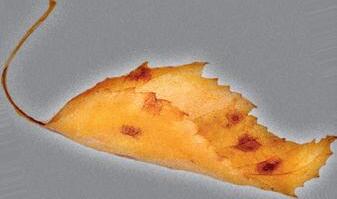
into the spring and fall, which also means the farm doesn’t need to cut as much hay for the herd.
“People don’t think enough about plant health and water-holding capacity and how that enables us to be more resilient — especially if we have drought,” Rob said. “In 2023 for example, we were out grazing while everyone else was feeding hay. We have become more resilient, because we have built a

“We’re trying to imitate the bison on the great plains,” Rob said. “Pack-hunting predators — like wolves — kept the bison moving across the land and caused them to form tight groups for better protection. As these large herds would move through the landscape, they would graze, trample and defecate on everything in their path. Because of the heavy impact this puts on the land, the bison wouldn’t return to these areas for some time. I don’t have any wolves at my disposal, so we use electric wire fencing as our predator. This allows us to keep the herd in tight groups and prevent any back grazing of previous paddocks. Some of the benefits to this system are increased plant growth/recovery, increased water infiltration, better manure distribution, building topsoil through increased carbon sequestration and so many more.”
Rob went on to say another benefit of this method is the extension of their grazing period






deeper root structure, so those plants will be healthier in drought. We did have to stop grazing eventually last year, but everyone else was shut down a month or more before us.”
Rob said he’s currently trying to get a stocking density of 50,000 pounds or more of beef per acre — well above conventional continuous grazing — and he said the conventional equivalent of pasture-raising beef isn’t nearly as effective when going for higher stock density grazing. Rob went on to explain that higher density herds must be moved more quickly to keep them from trampling and eating the available grass too rapidly.
“So, if left in that pasture for an extended period of time, they’ll be lacking key nutrients that were only in the good grass,” Rob said. “If not supplemented properly, they will lose body condition. This has negative effects on not only the cattle’s overall health, but also the health of the more desirable plants they’re overgrazing.

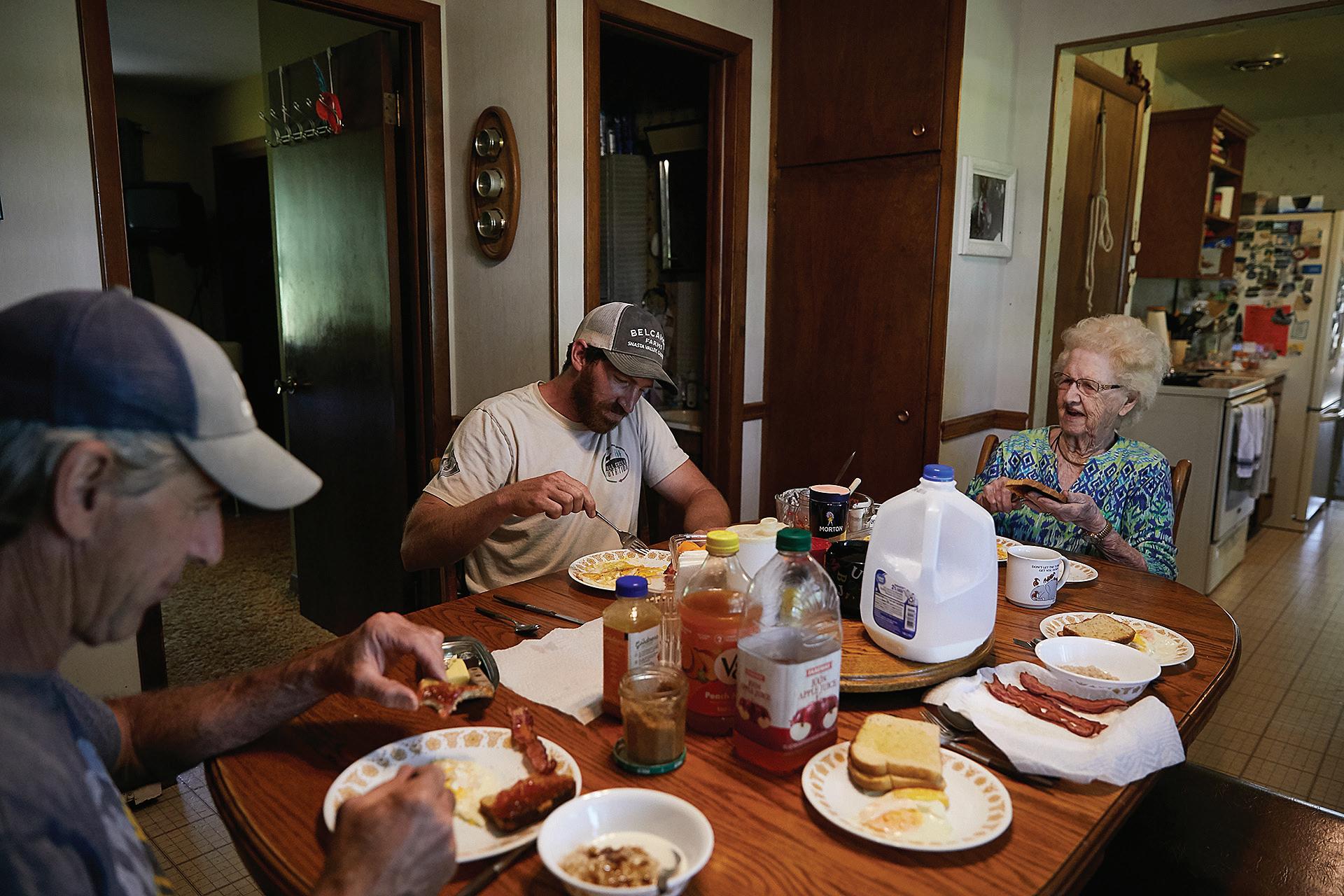
Rob said he tries to raise as much of his family’s food as possible — especially food his children enjoy eating — because he believes in epigenetics: the study of how environmental factors and behaviors can affect how genes work. “My kids love fruit, so I’ve planted a bunch of fruit trees and berry bushes for them to consume as they grow up,” said Rob. “Doing it this way allows us to know exactly how their food was raised. It just seems like the right thing to do.” (Photos submitted)



Bob added that, when moved to a fresh paddock, the cattle will move to the best grass first.
“We don’t give the cows credit for how smart they actually are for choosing what they like to eat and what is good for them,” Bob said. “It’s amazing to watch them, and it’s cool when you let them into a new paddock, because they’ll go to the end of the paddock searching and searching for those good plants, but they have to do it fast, because everyone else is right next to them doing the same thing. Once they establish where the best food is and establish their boundaries, then everyone gets together and starts eating.”
The perfect storm Jewell Enterprizes also switched to all-organic turkeys in 2001 — harvesting 20,000 every year.
“Turkeys are so prone to
from previous page Jewell Enterprizes continued on the next page

Congratulations to the Jewell family on generations of successful business! We are proud to have worked with you over the years and look forward to continuing to serve you.































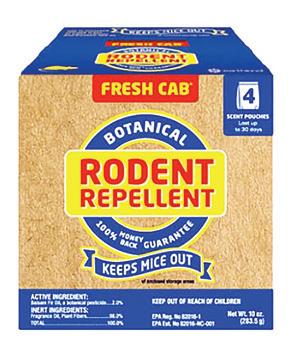









Jewell Enterprizes continued from previous page disease,” said Bob. “If there’s a way to die, they are going to find it. That was scary — going into it with no antibiotics. So, we went from using antibiotics to using probiotics. Animals are the same as humans when they get sick. The first thing they want to do is stop eating. The probiotic keeps that gut active, so they continue to eat and muscle their way through a potential disease.”
Last year, Bob said, farmers faced the perfect storm, which really tested their mettle and methods.
“We had the terrible drought, and nobody thought they were going to get a crop,” he said. “So, all these imports were coming in to take care of our needs for an organic crop. But, it turned out that we had a better crop, for the most part, than anybody thought. At the same time, avian influenza was killing millions of turkeys and chickens. And, lastly, the organic egg market is now less than the conventional egg market. So, the people who are raising organic chickens are tearing up their certificates and raising conventional. You take those three things, and now we have $6 organic corn, when it should be twice that.”

Pastured pork
Most recently, Rob added pastured hogs to the family farm in 2019. That first year, as an experiment, he only raised six pigs in

Bob said organic turkeys are something of a niche product, but he admitted that Jewell Enterprizes represents the minority of farmers in many ways — and they’re okay with that.
pas- ture and woods. Six years later, they’re now raising 100 hogs — 50 in a hoop barn and 50 in pasture and wooded areas called silvopasture, which integrate livestock, trees and grass. The family said their pasture pig operation came about as a way to use their tim-
ber acres, but the silvopasture can also capture more CO2 than heavily-wooded areas, when managed properly with rotational grazing. Rob said the result is well worth the extra work, adding the practices helping improve not only the environment and the nutritional quality of the pork, but the taste and texture of the pork as well.
“Allowing the animals lots of movement is key when trying to raise great tasting livestock,” he said.
“Movement creates lubrication in the joints and muscles, resulting in a more succulent and flavorful product. Think of the difference between white meat and dark meat on a chicken. The white breast meat, that doesn’t get utilized much is going to be very tender but bland and dry. The dark thigh meat that is used more often is going to be a little tougher but moist and flavorful.”
Rob believes there are plenty of young farmers itching to do things differently than past generations.
“There are many young people out there who actually do want to get their hands dirty and jump into these regenerative ways of farming,” Rob said.
Both Jewells said there are some who likely see their choices to produce organic products as less than sound decisions — a viewpoint each said bothers them far less today than it did in years past — and Rob hopes more farmers become willing to step outside the proverbial box and try different techniques on their farmland. He indicated support from consumers may have a hand in that shift.
“Less than 2 percent of the population is involved in agriculture, and yet, farmers are being pushed harder than ever to become larger,” he said. “I don’t blame the farmer, but I do question the consumer. You vote with your dollar every day. Whatever food choices you make support and shape what the future of agriculture is going to look like.”



Farming has never been a vocation for individuals looking for easy work. Farmers typically work long hours, braving the elements regardless of how unpleasant the weather may be.
All that hard work ensures individuals who live in rural, urban and suburban communities have constant, readily available access to healthy foods. Such devotion merits support, and thankfully there are many things consumers can do to show their appreciation for local farmers.
Buy fresh foods at your local farmers market
Farmers markets are many foodies’ favorite places, but they aren’t exclusive to individuals with a passion for food. Everyone needs to eat, so why not eat foods grown locally, which are generally more fresh and appetizing than imported fruits and vegetables sold at chain grocery stores? Even individuals who don’t typically eat fresh fruit and vegetables can find something delectable at a local farmers market, where anything from homemade tomato sauces to locally raised fresh beef and pork might be on sale.
Order directly from local farms
them. Farms may offer delivery or pick-up, and consumers can enjoy fresh foods even more knowing that they helped farmers earn higher profits by buying directly from them.
Check labels before buying in local grocery stores
Packaging labels will indicate where fruits and vegetables came from. When possible, choose items produced by local farmers. This may include fruits, vegetables, meat, pork, or even desserts like pies. Locally produced foods often taste more fresh than items sent from overseas or distant farms, and consumers will feel better knowing they helped to support local farmers.
Spread the word
Get the word out after a satisfying experience with local farms and farmers. Whether it’s buying food from farms or taking advantage of family days that let kids enjoy a day on the farm, sharing positive experiences via social media or wordof-mouth can be a great way to inspire your neighbors to support local farmers as well.










‘You vote with your dollar every day’
The father and son agreed change can be difficult for many farmers who have farmed the same way for so long, haven’t the manpower or lack the acres to experiment with alternative farming practices. However,
INSET - The Jewells raise 50 hogs every year in wooded areas called silvopasture, which integrate livestock, trees and grass. (Photo submitted)
Some farmers have embraced the e-commerce revolution and begun selling the foods they grow to consumers via their own websites. Research local farms and determine if it’s possible to buy directly from
Consumers can do much to support hardworking local farmers. In addition to feeling good about supporting their rural neighbors, consumers also might feel good when they sit down and enjoy a meal featuring locally grown, fresh foods.




















